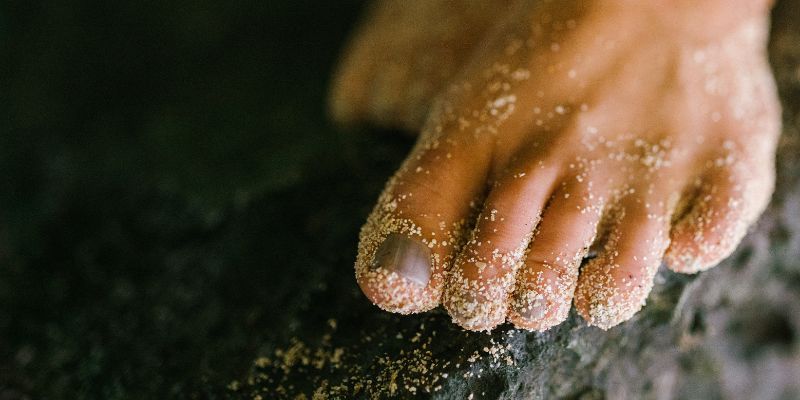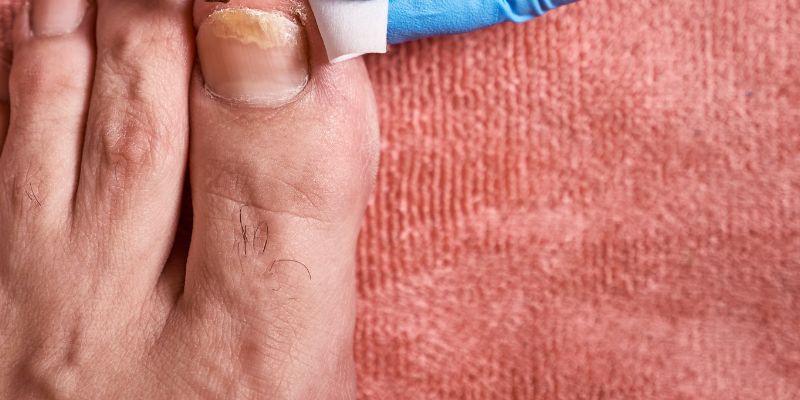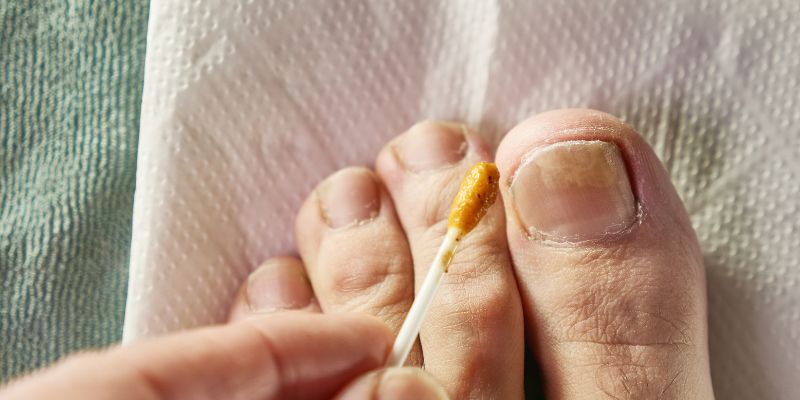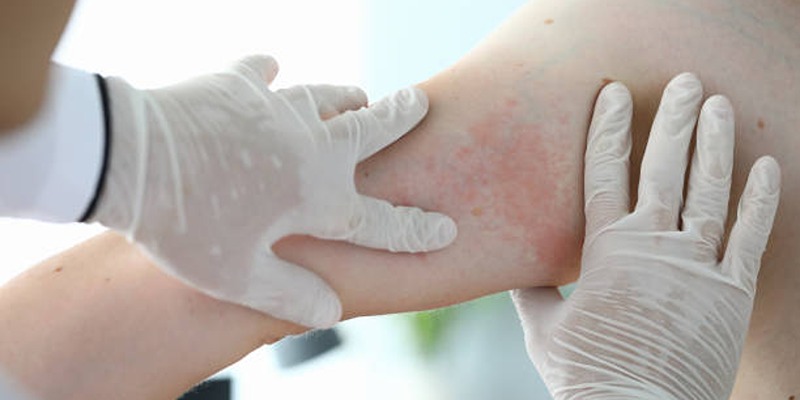Runner's toe, sometimes called black toenails, commonly affects runners and athletes. It occurs when blood gathers under the toenail and darkens it. Jogging downhill regularly, ill-fitting shoes or repeated injuries could cause this disorder. Runner's toe is typically benign, even if it may look worrisome.
If improperly addressed, it can cause discomfort and major foot issues. Knowing what a runner's toe is, its causes, how to avoid it, and good treatments are vital for athletes. With appropriate footwear changes and upkeep, you can reduce your chance of acquiring this illness.

What Is Runner's Toe?
Runner's toe is a disorder in which bleeding beneath the toenail turns the toenail black. This results in your toes constantly hitting the front of your shoe, traumatizing the nail bed. Pressure causes blood pools under the nail, giving the nail a black look. Although a runner's toe is usually connected with long-distance running, other sports, including hiking, soccer, or tennis, can also cause it.
Those who wear shoes either too tight or loose are more likely to get this problem. Running on steep downhill courses raises the risk as well. Though it can cause discomfort and anguish, a runner's toe is generally a cosmetic concern for most. If not treated quickly, the nail may fall off or get infected. Early recognition of the signs, as is action to stop more complications, is vital.
Symptoms of Runner's Toe
Early treatment of a runner's toe depends on an awareness of its symptoms. A darkened or damaged toenail developed by internal bleeding is the most clear indication. Particularly following a long run or intense exercise, you could also feel uncomfortable or have a throbbing sensation in the afflicted toe.
Other runner's toe symptoms include:
- Swelling near the toenail
- Sensibility or discomfort when pressure is applied
- Liquid or blood accumulation under the nail
- In severe circumstances, the nail might come free or separate.
A runner's toe may not hurt initially, but as pressure accumulates under the nail, it will grow more uncomfortable. You can see pus, redness, or warmth if the region turns infected. Early treatment of these symptoms helps avoid more damage, guarantees proper healing of the toenail, and frees it from complications.
How to Prevent Runner's Toe
Runner's toe can be avoided mostly by prevention. A few basic changes will prevent black toenails in runners from forming during your races or training.
- Wear the Right Shoes: Correctly fitted shoes are vital. Between the end of the shoe and your longest toe, your shoes should span roughly a thumb's width. Steer clear of extremely tight shoes, as they stress your toes.
- Keep Your Toenails Short: Regular nail trim will help prevent your nails from dragging inside your shoe.
- Use Moisture-Wicking Socks: Wearing socks that keep your feet dry lowers the danger since wet feet might generate friction.
- Lace Your Shoes Properly: To prevent your feet from sliding forward, ensure your laces are just rightnot too tight.
- Avoid Downhill Running: Minize jogging steep downhill sections since they affect your toes more heavily.
Using these guidelines will greatly reduce your risk of a runner's toe.

Treatment for Runner's Toe
You can use various home remedies available to treat runner's toe naturally. Although most cases will heal independently, appropriate treatment helps lessen pain and avoid infection.
- Rest and ice: To help with swelling and soreness, elevate your foot and use ice.
- Pain relief: Ibuprofen and other over-the-counter painkillers can ease suffering.
- Drain the nail: In severe cases of great pressure, a doctor can empty the blood by making a tiny hole in the nail. This hastens healing and releases pressure.
- Watch for infection: Maintain the cleanliness of the region and look for indications of infection, such as redness, pus, or warmth.
Generally speaking, the injured toenail will finally fall out and be replaced by a new nail. See a healthcare provider if the damage is serious or not healing.
When to See a Doctor?
Although a runner's toe usually goes away independently, occasionally, medical advice is required. You should see a doctor if:
- The discomfort gets severe and doesn't go away with rest or ice.
- The toenail comes out, or you start to suspect an infection.
- Pus, redness, or warmth surrounding the toenail point to an infection.
- You find walking on or applying weight to the afflicted foot difficult.
Examining the damage and providing more sophisticated treatment choicessuch as emptying the blood under the nail or writing medication for infectionsa healthcare provider can help. Rarely would surgery be needed to remove the nail or stop recurring problems. Early on, runner's toe care will help avoid long-term injury and guarantee that you return to running free from pain.
Tips for Recovery:
Recovering from a runner's toe requires patience and careful treatment to guarantee complete healing of your toenails. These ideas help to hasten recovery:
- Rest Your Feet: Until the nail has healed, avoid running or other demanding sports that strain your toes.
- Wear Comfortable Shoes: Choose open-toed shoes or ones with sufficient room to stop more damage to the afflicted nail.
- Elevate Your Foot: This lessens swelling and discomfort.
- Keep Your Feet Dry: Steer clear of damp surroundings as they raise infection risk.
- Watch For Signs Of Infection: If you observe any symptoms of an infection in your toe, pay great attention and, should necessary, consult a doctor.
The degree of the damage will affect the recovery time. While some cases clear in a few weeks, others may take longerespecially if the toenail comes off. A good recovery depends mostly on patience and appropriate treatment.
Conclusion:
Many runners and athletes suffer from the common but avoidable disorder known as runner's toe. Your risk can be lowered by understanding its causes and acting early to wear appropriate shoes and maintain toenails cut. Quick treatment and care are essential to avoid more problems if you have symptoms. Runner's toe usually heals on its own, but it's crucial to be alert for infection symptoms. Using the right technique can help you to stay running free from pain and preserve good feet.







